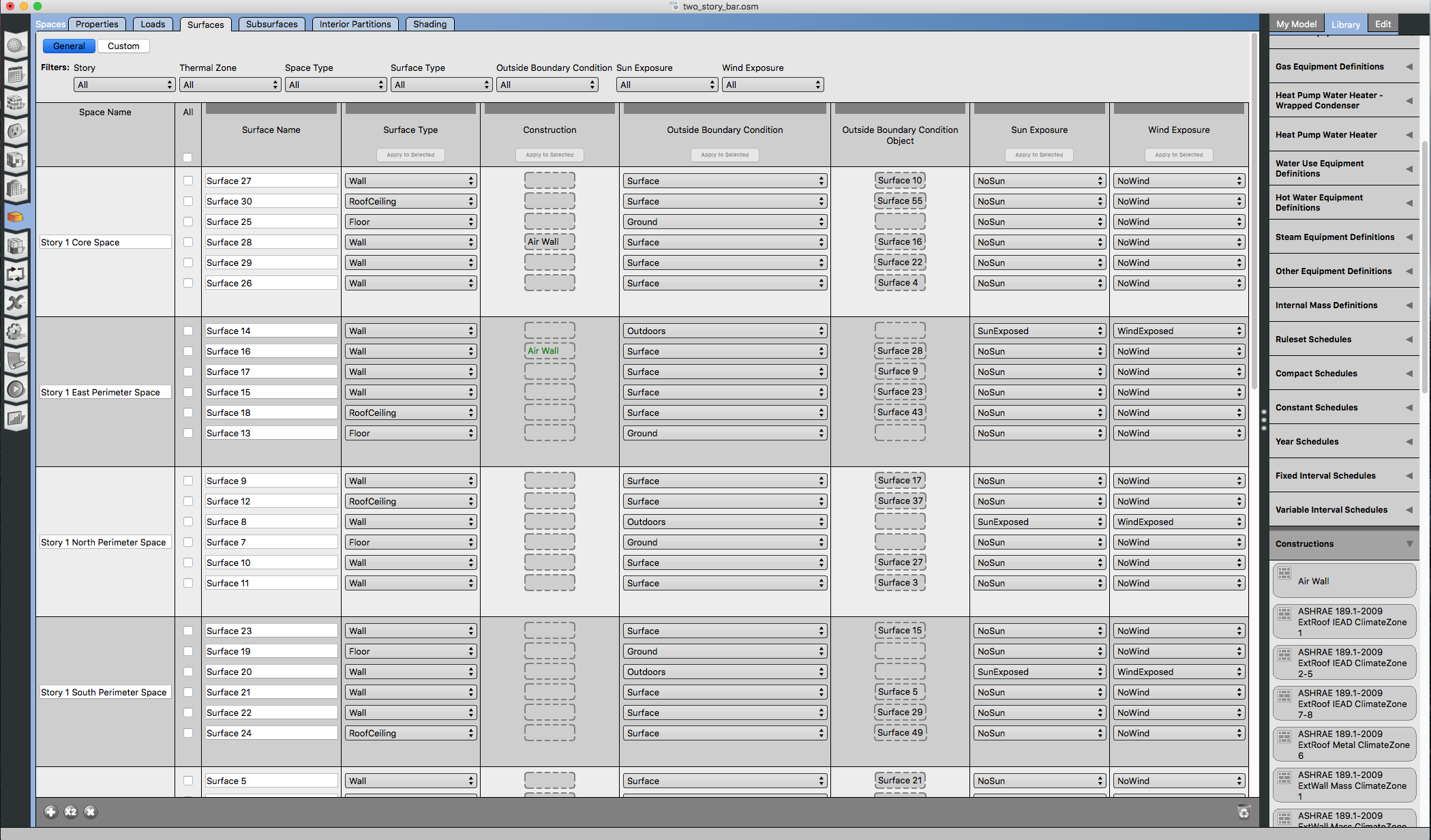First time here? Check out the Help page!
 | 1 | initial version |
@gokulram to get the outsideBoundaryConditionObject, use surface.adjacentSurafce. That returns a bool. After checking if it exists (which it should if boundary condition is "Surface" add a .get to get the surface.
But, OpenStudio has a tie breaker for constructions on matched surfaces that should fix the matched surface for you. Notice in the OS app that when I hard assign the air wall directly to a surface in the core zone, that the surface in the affected perimeter zone inherits that construction (shows as green). If the construction was non symmetrical then OpenStudio would use a mirrored version of it.

You can use inheritance diagram to see different places constructions can be applied. The deeper application is used when there is a conflict, with a hard assigned construction to a surface being the deepest, and a building level construction set being the shallowest.
Some example use cases for this are space types with construction sets for some surface types; such as an attic floor with insulation, or plenum floor, and also custom wall types like an medical imaging space type.
 | 2 | No.2 Revision |
@gokulram to get the outsideBoundaryConditionObject, use surface.adjacentSurafcesurface.adjacentSurface"Surface" "Surface") add a .get to get the surface.
But, OpenStudio has a tie breaker for constructions on matched surfaces that should fix the matched surface for you. Notice in the OS app that when I hard assign the air wall directly to a surface in the core zone, that the surface in the affected perimeter zone inherits that construction (shows as green). If the construction was non symmetrical then OpenStudio would use a mirrored version of it.

You can use inheritance diagram to see different places constructions can be applied. The deeper application is used when there is a conflict, with a hard assigned construction to a surface being the deepest, and a building level construction set being the shallowest.
Some example use cases for this are space types with construction sets for some surface types; such as an attic floor with insulation, or plenum floor, and also custom wall types like an medical imaging space type.
